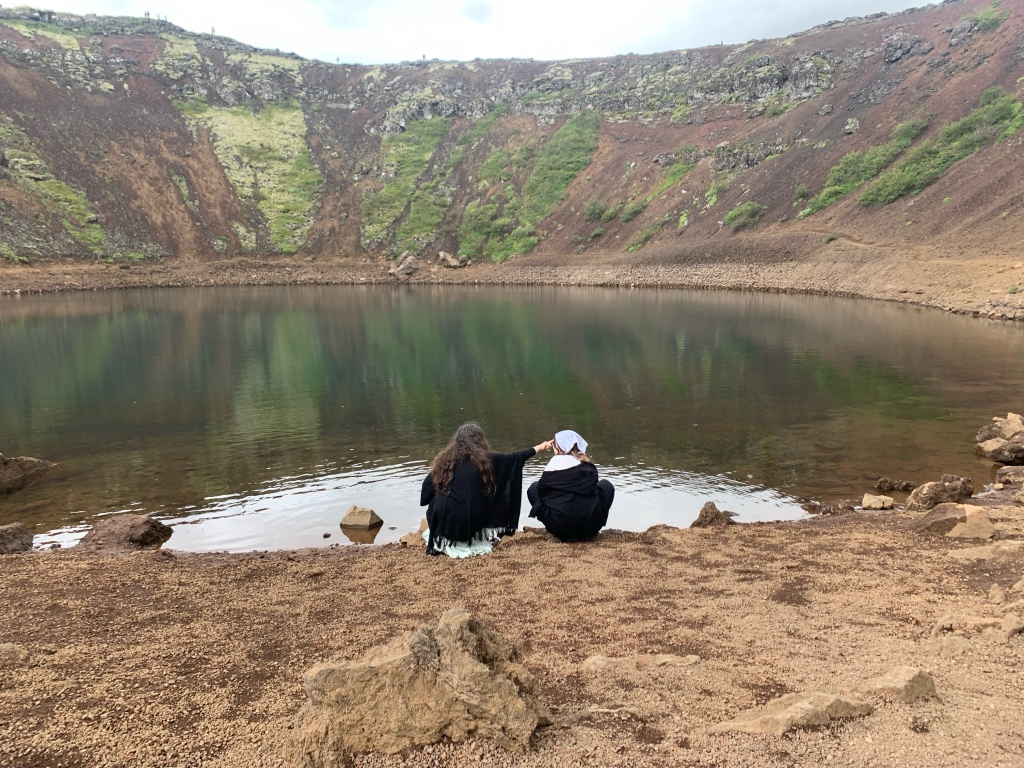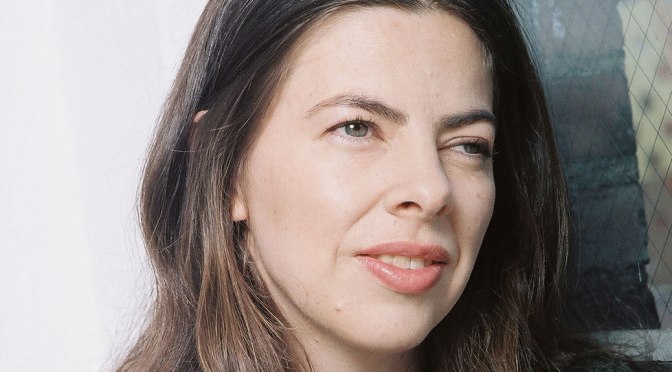Dedicated to Kohenet Andrea Jacobson of blessed memory, a deep practitioner of priestess presence
I have always loved obscure biblical women. My wife, who was educated in a yeshiva, marvels at the names and tales I mention to her; she’s never heard of them. Telling their stories, for me, is a form of resistance. They may be minor to the text, but to me they are main characters. As a feminist midrashist, I love digging into a text to find out more, to discover a radical take, to imagine a first-person perspective. As a contemporary spiritual teacher on the trail of the ancient priestesses, I find priestess role models in these hints of story. As the Jewish holiday season ends and we return to finding the sacred in the mundane, I want to share about a character I love, who doesn’t even have a name, but who, to me, teaches about being present, and meeting the mystery wherever we go.

Judges 13 begins with a traditional biblical scene of annunciation. The wife of Manoah does not have a child. An angel appears to her to say that she will bear a son. He must be a nazir or nazirite and will be a hero, delivering his people from their enemies. A nazir is a kind of self-appointed priest, who has taken a vow not to drink wine or cut one’s hair, and who, like the high priest of the Temple, is forbidden to be near dead human bodies. Such a person’s hair is holy and, at the end of the nazirite service, will be offered on an altar. Both men and women could be nazirites; indeed, the nazirite vow seems to be an avenue where women can become holy. We can see there is patriarchal anxiety about this avenue to priestesshood; Numbers 30 is full of laws about how fathers and husbands can annul the vows of daughters and wives, which likely is partly concerned about women becoming nezirot (sing. nezirah) of their own volition.
The wife of Manoah first appears as a traditional female character—she has no name, though Jewish tradition later gives her the name Tzlelponit or Hatzlelponi, which means “faces the shadow” or “faces the clarity.” (This already makes me think of her as a meditation teacher.) Yet the angel tells the wife of Manoah that she is to become a nezirah for the duration of her pregnancy: “You must not drink strong drink or eat anything unclean.” (Judges 13:4-5). This command is framed in relationship to her son, who will be a nazir from birth, and it enroles her as a sanctuary, a sacred space for her child to grow.

But the woman here is not just a vessel. The story moves from being a stereotypical annunciation to becoming really interesting. The woman goes home and tells her husband that a man “like an angel of God” came to her, and some of what he said (she doesn’t tell the part about their son being a hero). The husband either a) does not trust her, b) feels left out and wants to be included, or c) is something of an anxious person and wants to be sure of the instructions. He prays for the “man of God” to return and give him the instructions directly—“let him instruct us how to act.” But when the angel returns, it is not to the couple, but to the woman sitting alone in the field. (What is she doing there? Planting? Praying? When the rabbis see Isaac walking alone in a field, they assume he is meditating.) The message is for her and only her.
Wanting to fulfill her husband’s wish to meet the angel, Tzlelponi runs and gets her husband. She seems to feel completely comfortable that the angel will wait. I can’t help but see this as a very funny scene. Manoach follows his wife, puffing, and asks the angel for instructions. The angel says (with what I imagine to be a patient but annoyed tone): “The woman must be careful about all the things I told her.” In other words, she has already been instructed; her husband merely needs to listen to her. This is a rather extraordinary biblical moment, in which the woman is the prophet and the man is to receive her message. Scholar Yairah Amit writes that “’followed’ should not be understood as merely following her physically but rather in the sense of ‘guided by her words and counsel.’” (Yairah Amit, “Manoah Promptly Followed His Wife’ (Judges 13:11): On the Place of the Woman in Birth Narratives,” in Atalya Brenner’s A Feminist Companion to Judges, p. 146-155).
Manoach, wanting to be polite, offers the angel a meal because he thinks the being is human. He asks the angel’s name. The angel (again I imagine a patient but annoyed tone) says that any offering should be made to God, and adds “Why do you ask my name, given that it is wondrous?” (13:15-18) Tzlelponi understands from the beginning that she’s seen an angel; Manoach thinks he’s seeing a person, and offers human hospitality.
When Manoach makes the offering as requested, the angel causes fire to appear on the altar and then ascends to heaven in the flames of the sacrifice. (This is reminiscent of apparitions to Moses and Elijah.) Tzlelponi and Manoach prostrate themselves on the ground in awe. Now Manoach knows he has seen a supernatural being, and he exclaims to Tzelponi: “We will die, for we have seen God.” He is terrified of the miracle he has experienced.
To comfort him, Tzlelponit replies: “If God had wanted to kill us, God would not have taken an offering from us, or shown us all these things or let us hear such things as these.” (Judges 13:23). She is unafraid. First of all, God has promised her a pregnancy, it does not make sense that God would now kill her and her husband. Second of all, they have witnessed a miracle in the fire on the altar; this is a sign of favor, not punishment. Third of all, if God was displeased with them, why send an angel to begin with?
Through these words, Tzlelponit shows herself to be brave, intelligent, pious and sensible. She perceives what is happening much more clearly than Manoach. And, we might see even deeper into her words. Tzlelponit, to me, is a profound priestess role model. When Spirit appears to her, she receives the message simply and calmly. She isn’t ruled by anxiety. She understands that what she is experiencing is sacred. Unlike her husband Manoach, she doesn’t try to impose human categories, or establish control or dominance. She simply experiences what is unfolding, and perceives it accurately. Even in the face of a spontaneously flaming altar, she is completely present. The name midrash gives her– “faces the clarity”—suggests this is exactly her gift. Indeed Numbers Rabbah 10:5 translates Tzlelponi as “faces the angel.”
And, Tzlelponi has deep self-confidence. She speaks up against her husband when she thinks he is wrong. She’s kind to him— she runs to get him when the angel appears again, and she comforts him when he is afraid. But she doesn’t let him override her view of reality. She is also a role model for standing up for our own connection to the sacred and the truth. She is one of the most powerful biblical priestesses I have encountered.
I must add that according to the Talmud, Tzlelponi did not only give birth to Samson. She also had a daughter, Nashyan (Bava Batra 91a). This child too would have been a miracle child. I love the idea of Tzlelponi teaching priestess presence to Nashyan. I wonder what they talked about together. I wonder if they never cut their hair. I wonder if they went back to that field often to meditate and make offerings. I imagine them as kohanot, as priestesses.
Since then, Tzlelponi’s good qualities haven’t gone without notice. Shlomo Luria, a sixteenth-century kabbalist, reports in his book Chochmat Shlomo that Tzlelponi is “good to defend against evil spirits.” Perhaps this is because of her ability to face into the mystery without fear. As the Jewish calendar turns and I face into the mystery of the new year, I honor Tzlelponi as one of my Hebrew priestess ancestors.











